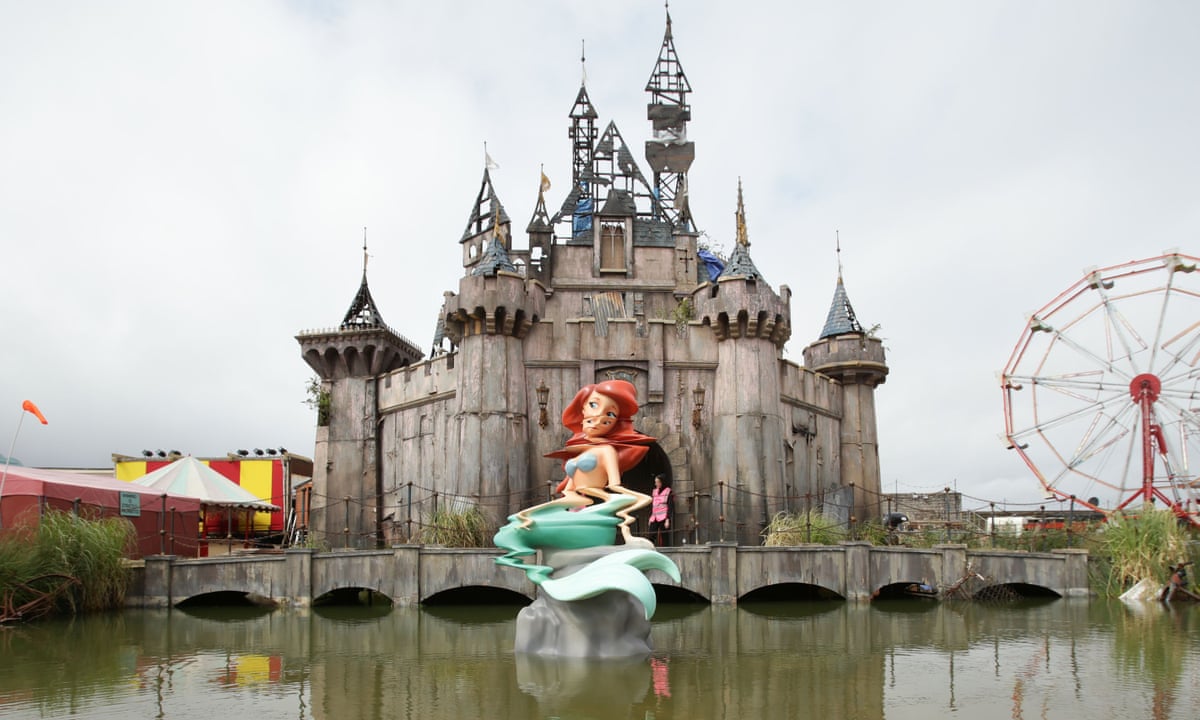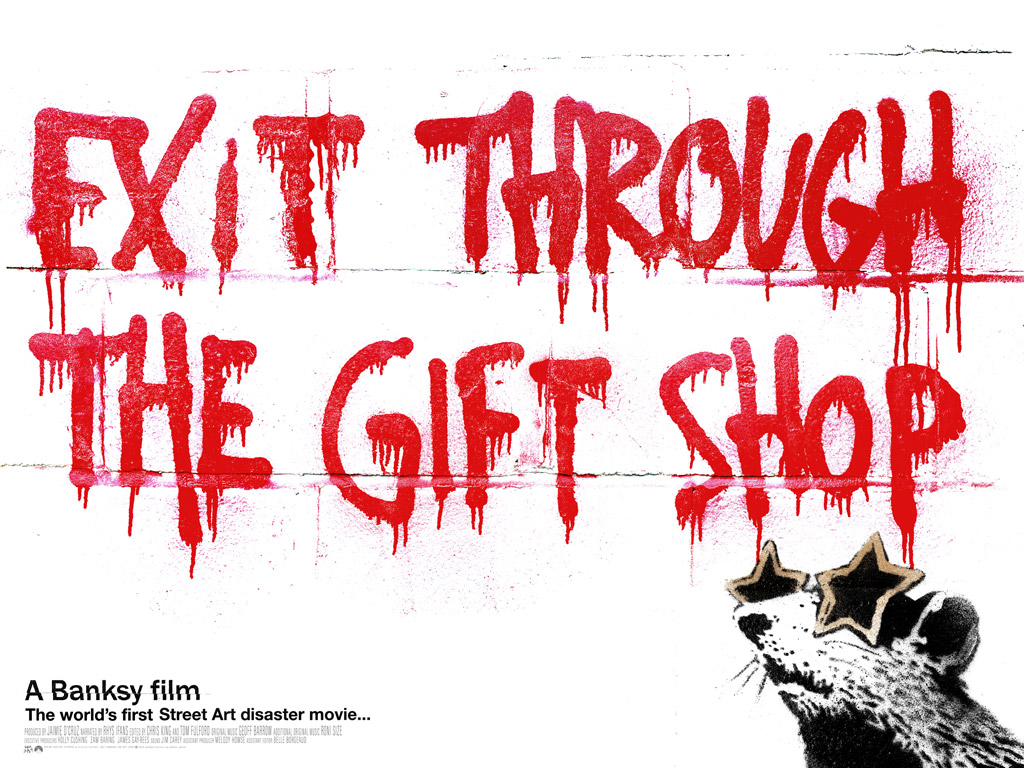How Does Banksy Make Money?
Banksy is one of the most recognized names in the contemporary art world. Despite his anonymity and an apparent disdain for the commercialization of art, Banksy has built a global brand that generates millions of dollars from direct artwork sales, auction sales and private sales. The paradox of his anti-establishment message thriving within a capitalistic art market raises an interesting question: how does Banksy make money?
Banksy's Origins and Intent
Banksy began his career in the 1990s as a graffiti artist in Bristol, UK, using stencils to quickly apply politically charged and satirical images on public walls. His work often critiques capitalism, war, and authority—ironically, the very systems that now generate wealth from his name.
Banksy's work is rooted in the idea of art for the people, accessible in the streets, not confined to galleries or auction houses. Yet, over time, the art world came calling, and Banksy's career morphed into an unprecedented phenomenon where public, often illegal street art became highly coveted pieces in private collections as well as his own limited edition releases.
So how does he earn money while maintaining his principles? Let's break it down.

Original Artwork and Studio Pieces - Direct Releases & Primary Sales
While Banksy is known for his street art, he also creates original artworks—canvas paintings, prints, sculptures, and installations. In Banksy’s early career these works were released through various direct sales channels such as the publisher’s Pictures on Walls and various pop ups including the acclaimed Santa’s Ghetto. In his early career, Known as Primary sales, the primary market is where a piece of art is first sold. This can happen directly from the artist, a dealer, or through commissioned work. Banksy was represented by dealer Steve Lazaridis and, based on the typical working models of galleries, would earn a percentage of the value of the items sold through his representative. As Banksy’s career has expanded, he has also worked directly with major collectors releasing special VIP editions or giving early access to those in the fold to acquire his artworks. Banksy’s most recent release Fragile - depicting a white mouse clawing its way up a cardboard box - was released as a philanthropic endeavor released through the Legacy of War Foundation.
As with many artists, Banksy earns money through selling to the public either directly as with his pop-ups or indirectly via representative (for circa 10+ years Banksy has not had any gallery representation).
Secondary Market Sales (But Not Direct Profit)
One of the biggest money-making forces surrounding Banksy’s work is the secondary art market—but this is where the situation as to what Banksy earns is more complex.
Banksy doesn’t directly profit from secondary market sales. If someone buys a Banksy print for $10,000 and later sells it for $500,000, that profit goes to the owner, not to Banksy. However, high-profile auction sales have significantly increased the demand (and value) of his work. Some notable examples include:
-
“Girl With Balloon” (2018), which shredded itself immediately after being sold for over £1 million at Sotheby’s, later renamed “Love is in the Bin” and resold for $25 million.
-
“Devolved Parliament” (2019) sold for nearly $12 million.
Explore more in our article on Banksy’s most expensive artworks.
Although Banksy doesn't make money from these resales, the media coverage and market hype surrounding these sales indirectly benefit his brand. Increased interest in his work can lead to higher prices and more demand for his original studio pieces—which he can and does sell through controlled channels directly to collectors. In Europe, Banksy earns a percentage of the sale value through the artist resale right initiative which is a percentage of money given to the artist based on the price of the work.

Exhibitions and Licensing
Banksy doesn’t typically authorize commercial exhibitions of his work. However, he has staged his own shows, including:
-
“Dismaland” (2015) – A dark parody of Disneyland, featuring works by Banksy and other artists. Entry tickets and merchandise generated revenue.
-
“The Walled Off Hotel” (2017–ongoing) – A functioning hotel in Bethlehem overlooking the West Bank barrier. Rooms are decorated with original Banksy pieces, and it includes a museum and art shop. This project has likely been one of his most sustainable sources of income and social impact.
Merchandise sold through these ventures—posters, mugs, postcards—are typically modestly priced and designed to be accessible. Again, while not “get-rich” schemes, they likely help sustain his operations and projects.
As for licensing, Banksy is extremely selective. He doesn’t license his imagery for commercial use, and Pest Control doesn’t sell usage rights to corporations or individuals. When his work appears on t-shirts or mugs sold online or in stores, it's usually unauthorized. He’s been involved in legal disputes to protect his intellectual property, not for profit, but to prevent misuse of his work.

Film and Media
Banksy’s foray into filmmaking with "Exit Through the Gift Shop" (2010) was a significant commercial success. The documentary, which blurred the lines between satire, biography, and art commentary, was nominated for an Academy Award and earned strong box office returns.
Banksy presumably earned income from the film’s distribution, streaming rights, and related merchandise. However, like his art, the film also served to further his myth and influence, increasing the demand for his work.
Banksy has also been involved in television projects, short films, and animations, though none as commercially successful or prominent as “Exit Through the Gift Shop.”
Mystique and Market Power
One of Banksy's greatest assets is the power of mystique. The fact that his identity remains a secret albeit to a select few, combined with his strong anti-commercial stance, has created an aura of authenticity and rebellion that fuels demand.
Paradoxically, the more he resists commercial norms, the more the market wants him. And he’s used that to his advantage. His controlled output, carefully curated projects, and limited availability ensure that demand always outweighs supply.
Banksy also operates with strong brand discipline—rare in the art world. Pest Control ensures there’s a tight grip on what is considered “real” Banksy, which protects the market and his legacy.
Banksy and Philanthropy
Banksy has donated millions in art and funds to causes he supports, including refugee charities, homeless support organizations, and the Palestinian cause. He often sells pieces at cost or donates originals specifically for charity auctions. For instance, in 2020, his painting “Game Changer”, a tribute to healthcare workers during the COVID-19 pandemic, sold for £16.7 million ($23 million), with proceeds going to NHS charities.
While these actions don’t directly generate income, they reinforce Banksy’s public persona and moral stance, keeping his brand strong while allowing him to support causes that align with his values.
Banksy has built a unique business model based on limited direct sales, strategic use of exhibitions, media projects, and carefully managed branding. Though he doesn’t profit from the majority of sales in the secondary market, his original studio works, installations, and artistic ventures do bring in substantial income.
More importantly, Banksy seems to operate with a sense of purpose rather than profit. He uses his art—and the money it generates—as a tool for commentary, charity, and activism. In a world where most artists strive for fame and wealth, Banksy has flipped the script, proving that mystery and meaning can be just as powerful—and profitable.

Discover Banksy signed prints for sale and contact our galleries for further information to buy Banksy paintings via info@guyhepner.com or, if you’re looking to sell, find out how to sell Banksy prints. Discover more useful articles in Who is Banksy? Banksy vs Warhol and What is Banksy Pest Control?

